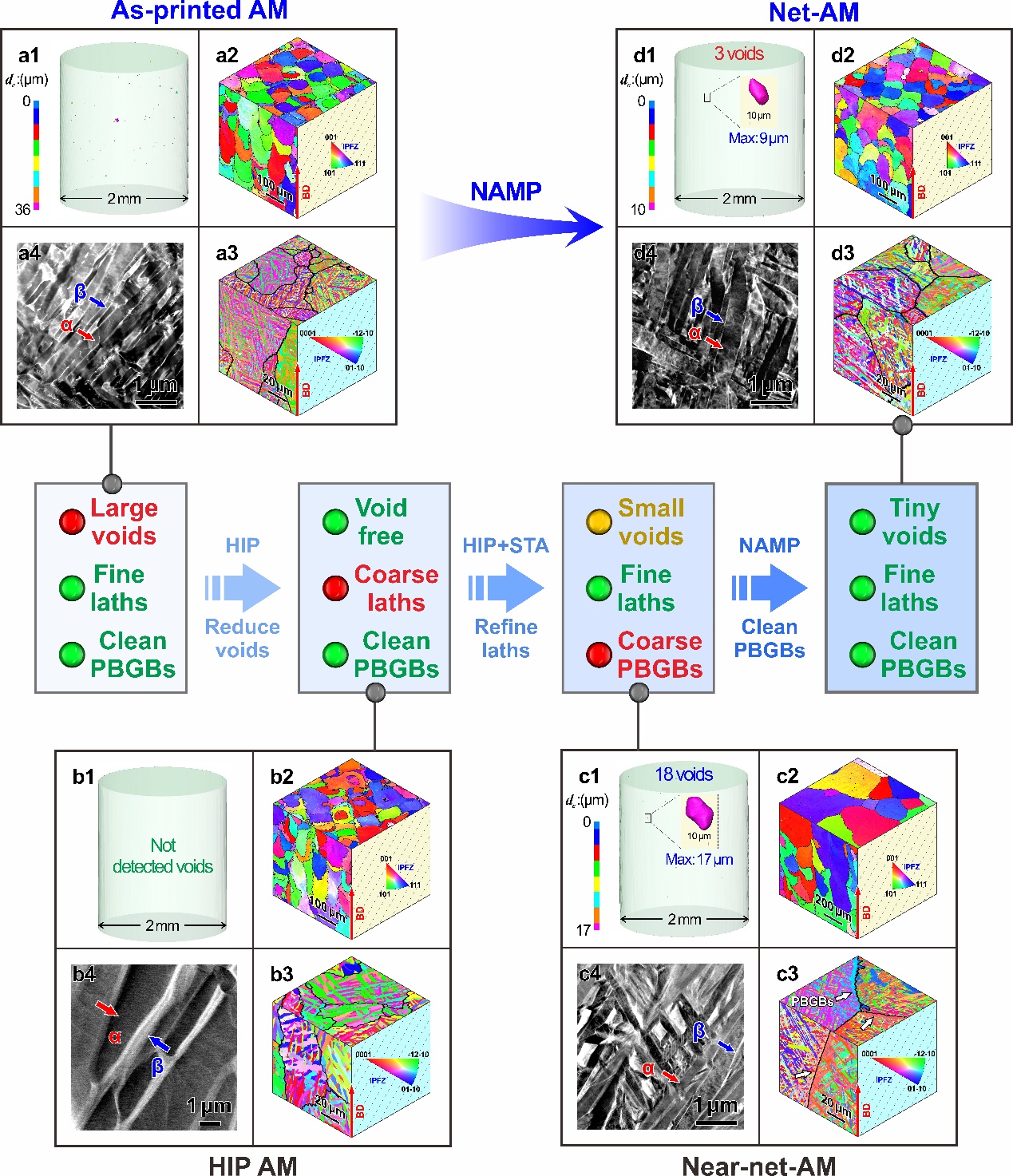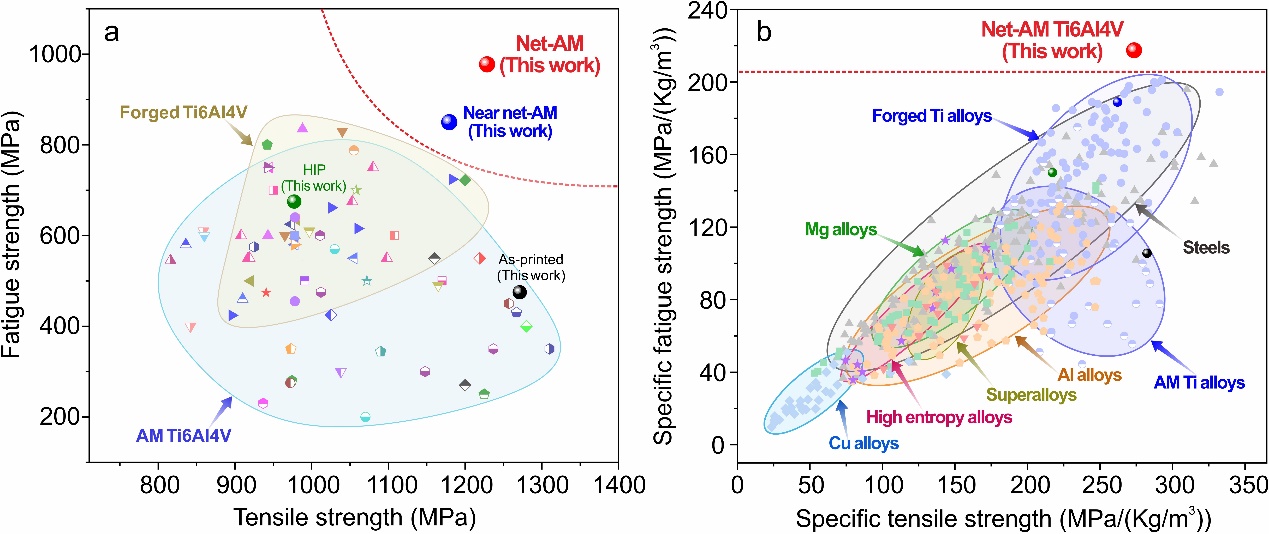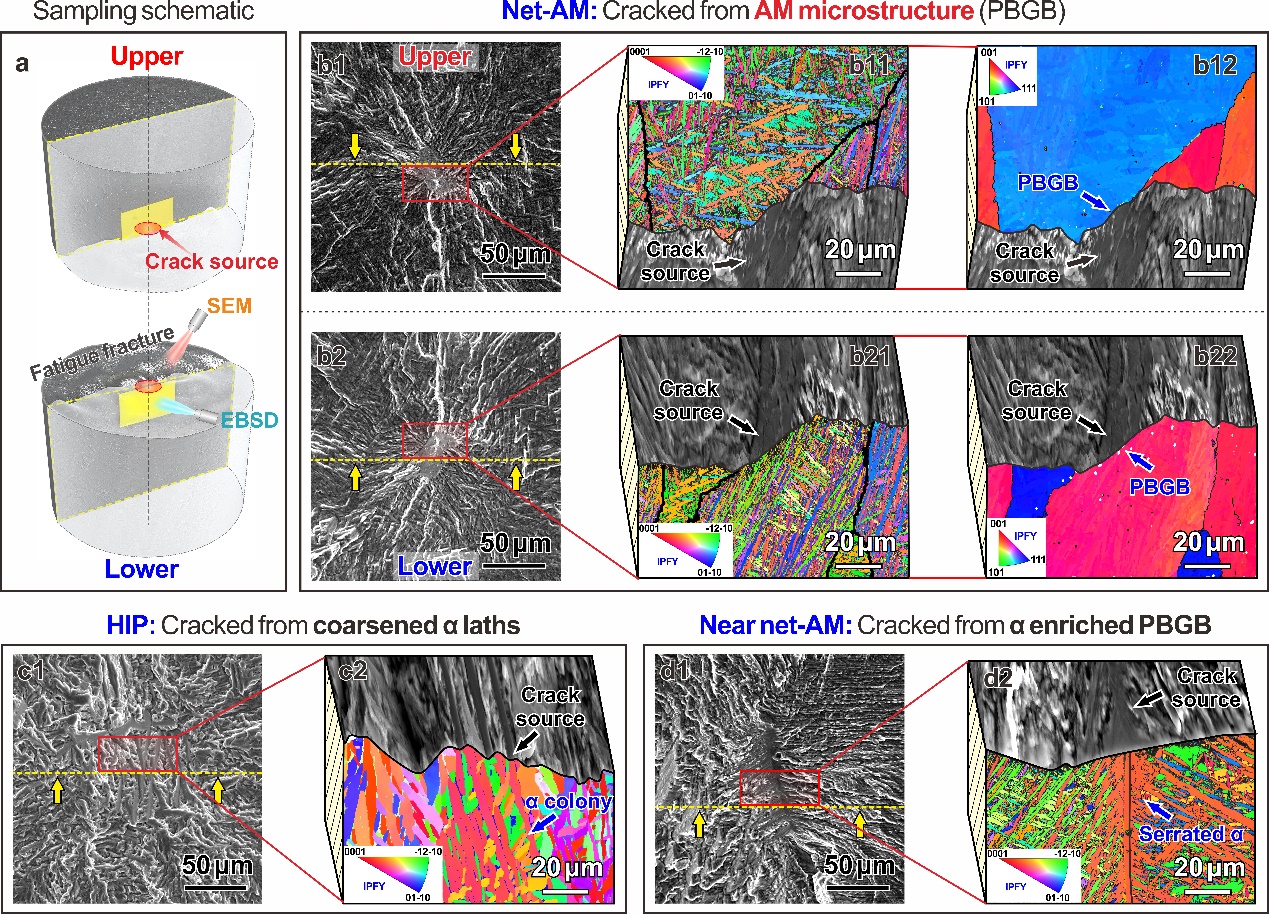Chinese Scientists Propose Anti-fatigue Preparation for 3D-printed Titanium Alloy
A research team led by Profs. ZHANG Zhefeng and ZHANG Zhenjun from Institute of Metal Research of Chinese Academy of Sciences has proposed an innovative strategy to fabricate an anti-fatigue 3D-printed titanium alloy by separately regulating their microstructure and defects, called as net-additive manufacturing preparation (NAMP).
The study was published in Nature on Feb. 28, 2024.
Additive manufacturing (AM), also known as three-dimensional (3D) printing, is a disruptive technology in the manufacturing field. However, the poor fatigue performance of 3D-printed materials under cyclic loading—compared with traditional manufacturing—seriously limits the application of such materials as structural components in important fields such as space exploration and aviation.
In this study, in terms of their previous fatigue prediction theories, the researchers proposed a groundbreaking concept: 3D-printed microstructures (i.e., Net-AM microstructures) have naturally high fatigue resistance. However, their low-fatigue performance of 3D materials may be overshadowed by the negative effects of microvoids induced by the current printing process.
To verify this concept, they invented the Net-Additive Manufacturing Process (NAMP), including a hot-isostatic pressing (HIP) to elimate the microvoids and a subsequent high-temperature-short-time (HTSt) heat treatment to restore the AM microstructure with fine martensite lath, which can successfully restore a nearly void-free Net-AM microstructure to the titanium alloy. Interestingly, the Net-AM microstructure has remarkably high fatigue resistance, which exceeds the resistance of all other additively manufactured and even forged titanium alloys. The Net-AM microstructure also shows the highest specific fatigue strength (i.e., fatigue strength/density) of all reported materials in the world.
The fatigue cracks of the microstructures prepared using the NAMP process normally nucleated at clean primary β grain boundaries and fine martensite lath, successfully avoiding many traditional fatigue weaknesses and preventing localized damage accumulation, thus exhibiting extremely high fatigue resistance.
This study reveals the naturally high fatigue resistance of the 3D-printed microstructure and the potential advantages of 3D printing technology in the production of structural components, and also points out clear directions for 3D printing anti-fatigue manufactring.

Fig. 1 Microvoid distribution and microstructure of as-printed state and other three states. (a1-d1) 3D visualization images of the quasi in situ XRT test sample evaluating the size and spatial distribution of microvoids. (a2-d2) Reconstructed orientation maps of prior β grains based on the EBSD results of the α phase revealing the change in the size and morphology of the prior β grains. (a3-d3) Inverse pole figures (IPF) of the α phase indicating the size and orientation distribution of α laths and colonies. (a4-d4) STEM micrographs showing the size and distribution of the α/α′ laths and β phases. Based on several systematic studies, the Net-AM microstructure is ultimately obtained after the NAMP technique.(Image by IMR)

Fig. 2 Evaluation on the fatigue strength and specific fatigue strength of the Net-AM microstructure in comparison with other microstructures as well as other materials. (a) The fatigue strength at R = 0.1 vs. tensile strength for our work and the Ti-6Al-4V alloys in the literature. (b) Specific strength vs. specific fatigue strength of our work and other materials reported in the literature. The current Net-AM Ti-6Al-4V not only displays the transcendent fatigue strength over both the AMed and forged Ti-6Al-4V alloys but also displays the highest specific fatigue strength among all materials. (Image by IMR)

Fig. 3 The fatigue cracking modes and corresponding microstructural information. (a) Schematic illustration for our precise sectioning technique on the location of fatigue crack initiation; maximum stress and cycles to failure for (b) NAMP state; (c) HIP state; (d) HIP+STA state. The fatigue cracks of the NAMP state initiate from the clean PBGBs, which is a common characteristic in the AM microstructure, indicating that we have detected the fatigue resistance of the Net-AM microstructure. (Image by IMR)